Cities' growth pains
-
- from Shaastra :: vol 03 issue 11 :: Dec 2024 - Jan 2025

Rapid urbanisation poses challenges for the future, but it also provides opportunities and fosters innovation.
howindialives.com
howindialives.com is a database and search engine for public data
The dynamics of cities have long played a crucial role in human development, serving as catalysts for the creation of human, economic, social and technological capital. Cities across the world are the primary engines of economic activity, generating jobs and fostering innovation. The density improves access to education, healthcare and other services. Efficiency tends to be better and productivity higher.
THE SCALE
These advantages have fuelled a significant wave of urbanisation across the world. In 2022, the world's urban population was 32% higher than the rural population; in 1990, it was the other way around. The 10 most-populous cities projected in 2050 are expected to have about 325 million people then, with every city (except Tokyo) experiencing growth in the next 25 years. This trend provides opportunities, but it also presents challenges.
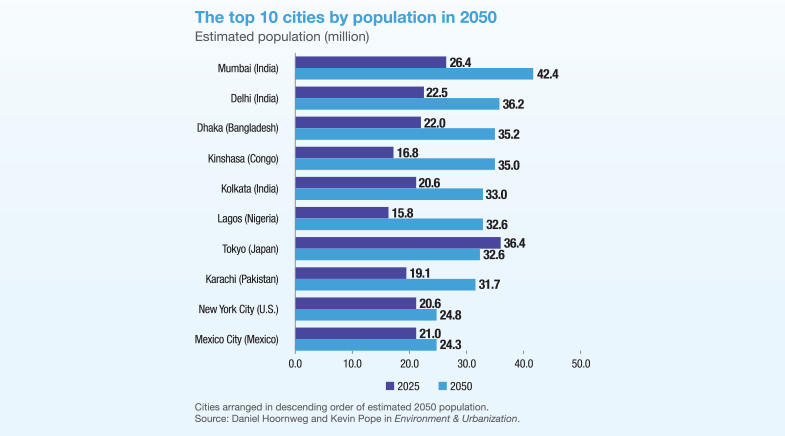
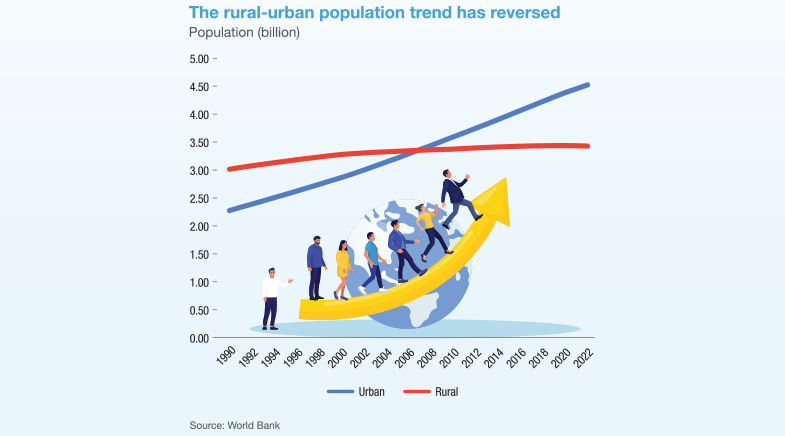
THE CHALLENGES
Cities worldwide face critical sustainability challenges that are becoming increasingly urgent. At the heart of these challenges is the climate crisis: cities are both major contributors and vulnerable targets.
Urban areas consume more than two-thirds of the world's energy and generate over 60% of greenhouse gas emissions while experiencing temperatures 3-5°C higher than surrounding rural areas due to the urban heat island effect. This problem is compounded by a loss of urban green spaces, which have declined from 19.4% of area in 1990 to just 13.9% in 2020.
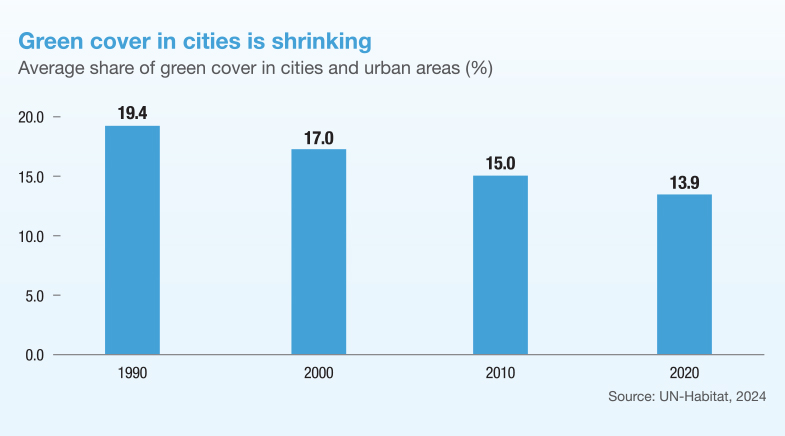
Urban areas also face infrastructure strain. By 2050, urban water scarcity is seen to affect 2.4 billion people. The number of large cities facing water shortages will increase from 193 to 292.
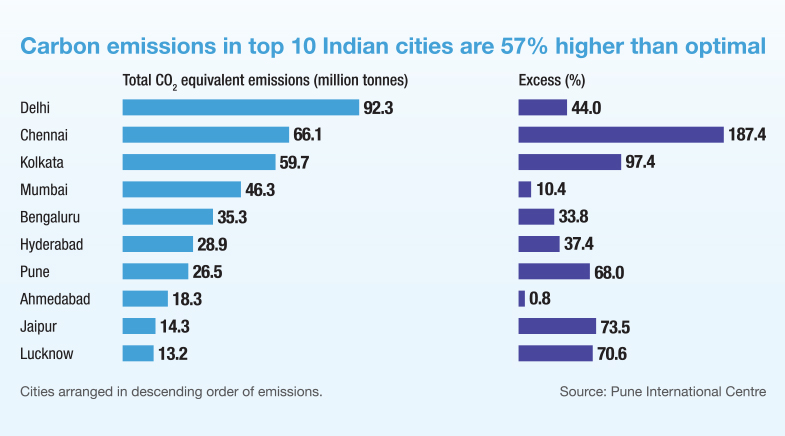
These challenges are illustrated in countries like India and China. Indian cities are warming at an alarming rate of 0.53°C per decade, with carbon emissions in the top 10 cities exceeding optimal levels by 57%, according to a study published by the Pune International Centre.
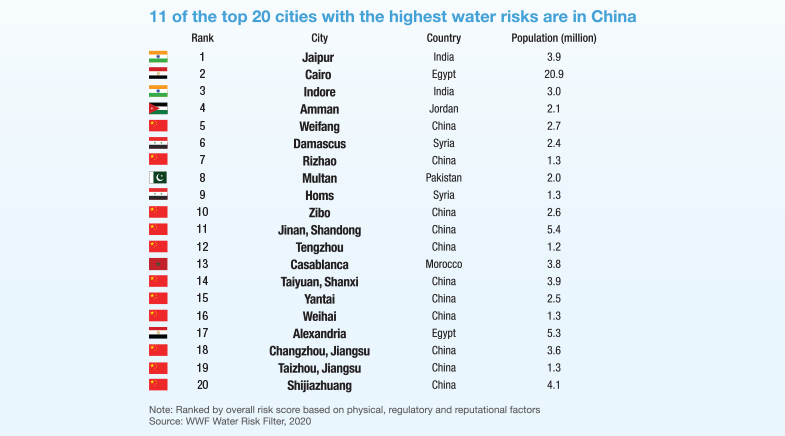
Similarly, Chinese cities, which have been at the forefront of development, face severe water risks: 11 of the world's 20 most water-stressed cities are located in China.

Beyond environmental concerns, cities face infrastructural and governance issues, which manifest themselves in different ways, such as road accidents. India's top 10 cities reported about 35,000 road accidents in 2022, while floodings are becoming more frequent during heavy rains.
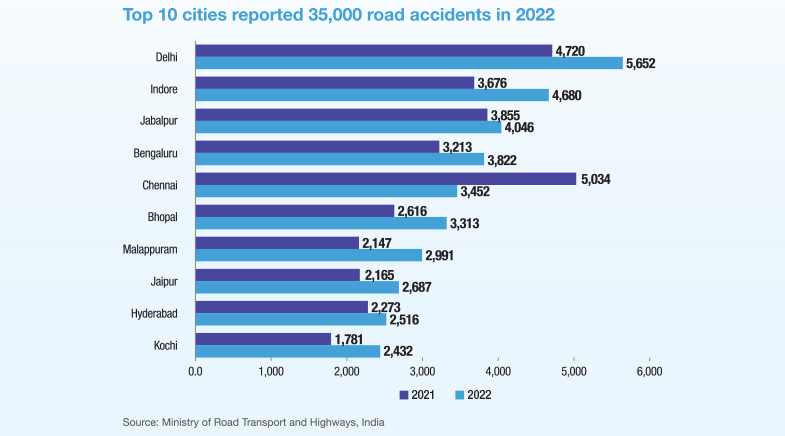

Larger cities, while generally wealthier, tend to be more unequal than smaller ones. Inequality rates in the U.S. cities are higher than the national average, according to a study by the Brookings Institution.
THE SOLUTIONS
Technology offers cities powerful tools to address some of these challenges. For example, smart infrastructure powered by Internet of Things devices and artificial intelligence can now monitor and manage a city's vital systems in real time — from traffic flows to energy use and waste management. However, these are hard, complex problems, demanding the right policy and intelligent interventions that consider local factors and are backed by political will.
According to REN21, a policy network and a multistakeholder governance group, over 1,300 cities globally, covering a billion people, have renewable energy targets or policies.
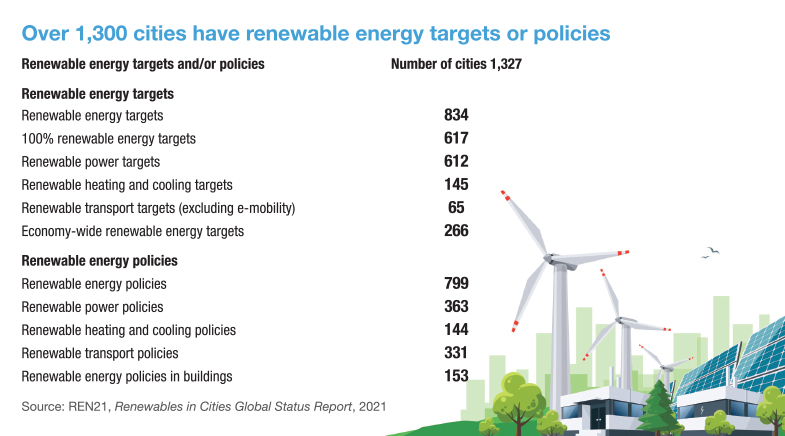
Over time, this could address some of the environmental issues facing cities. Government initiatives are backed by private-sector innovations. There are about 2,250 smart city start-ups globally, of which nearly 800 have received funding. In the past seven years, over $5 billion have gone into these start-ups, according to data intelligence platform Tracxn.

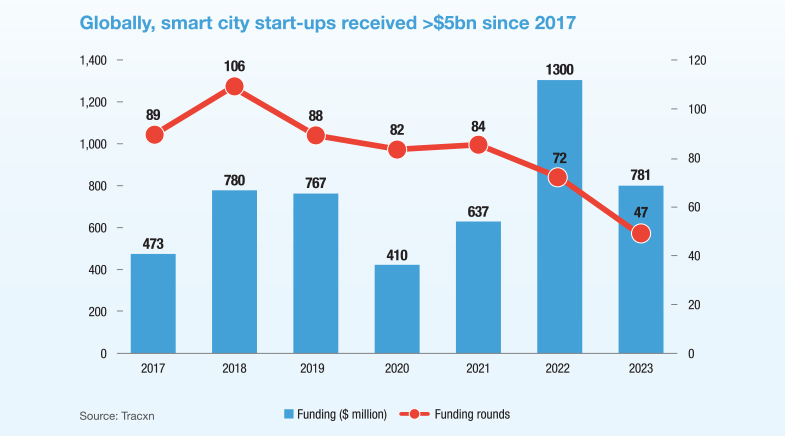
While this could result in innovative solutions, the financing needs are exponentially higher. According to the 2024 State of Cities Climate Finance report, published by Climate Policy Initiative, urban climate finance has more than doubled to $831 billion between 2017 and 2022; over 50% of that was for transport.
However, the needs are higher: $4.3 trillion annually from now until 2030 for mitigation (efforts to reduce or prevent greenhouse gas emissions) alone. For adaptation, which involves adjusting to the actual or expected effects of climate change to reduce vulnerability and build resilience, it could be higher.
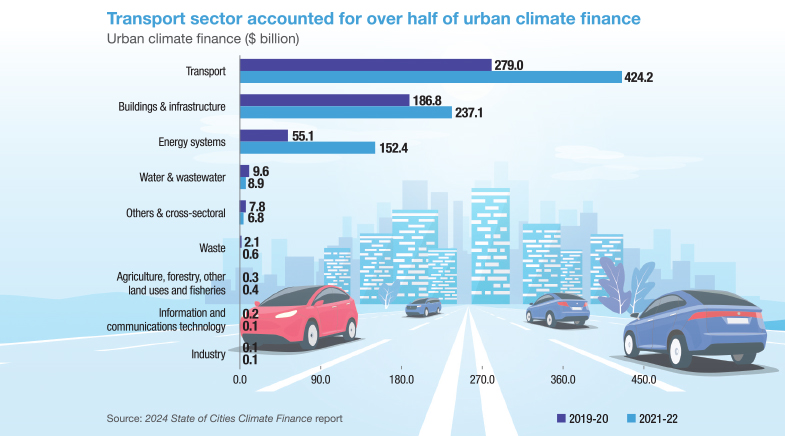
While technology and innovation offer promising solutions, the sheer magnitude of investment needed underscores that this is not merely a technological challenge but a test of global political will and cooperation.
See also:
Cities of the future
The future of cities
Fantastic plastic!
Power to the people
Walking the green talk
Greening our cities
Birds and the city
Have a
story idea?
Tell us.
Do you have a recent research paper or an idea for a science/technology-themed article that you'd like to tell us about?
GET IN TOUCH














